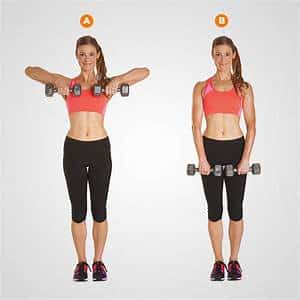Functional fitness and functional exercise are the latest gym buzzwords. They focus on building a body capable of doing real-life activities in real-life positions, not just lifting a certain amount of weight in an idealized posture created by a gym machine. Making Muscles Work Together
“Conventional weight training isolates muscle groups, but it doesn’t teach the muscle groups you’re isolating to work with others,” says Greg Roskopf, MS, a bio mechanics consultant with a company called Muscle Activation Techniques who has worked with athletes from the Denver Broncos, the Denver Nuggets, and the Utah Jazz.
“The key to functional exercise is integration. It’s about teaching all the muscles to work together rather than isolating them to work independently.”
So what’s an example of a functional exercise? Think of a bent-over row; not the kind of row you do on a seated machine, but the kind you do leaning over a bench, holding the weight in one hand with your arm hanging straight down, and then pulling the weight up as your elbow points to the ceiling, finishing with your upper arm parallel to the ground. “That’s an exercise that will build the muscles of the back, the shoulders, the arms, and because of its nature will really work your whole body,” says exercise kinesiologist Paul Chek, MSS, founder of the Corrective High-performance Exercise Kinesiology Institute in California who has advised the Chicago Bulls and the U.S. Air Force Academy.
“Compare that motion to a carpenter bending over a piece of wood, a nurse bending over a bed to transfer a patient, or an auto mechanic bending over to adjust your carburetor. Anyone doing a bent-over row will find a carryover in things you do in normal life.”
Contrast that with the seated row: You’re sitting in a chair with your chest pressed against pads, and you pull two levers back. “You may be strengthening certain muscles, but your body’s not learning anything, because you don’t have to activate your core stabilizer muscles or the stabilizers of your arms and shoulders. The machine’s doing it for you,” says Chek.
“In functional fitness, most of the time, you should be standing on your own two feet and supporting your own weight when you lift anything.”
Still have questions? Our highly skilled personal trainers would love to start a conversation with you.

